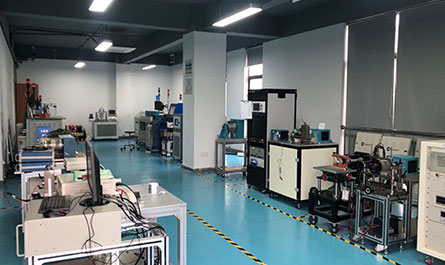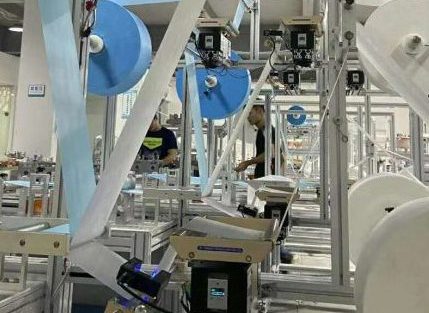
In the fast-paced world of engineering, innovation isn’t just a buzzword—it’s a necessity. As industries push the boundaries of automation, renewable energy, and smart manufacturing, one tool has quietly become the backbone of modern design: **motor software**. For engineers, this isn’t just another program—it’s a game-changer.
THE EVOLUTION OF MOTOR DESIGN 🛠️
Gone are the days of sketching motor designs on paper or relying on fragmented simulation tools. Today’s motor software integrates simulation, testing, and optimization into a single seamless workflow. Imagine designing a high-efficiency electric vehicle motor while simultaneously predicting thermal behavior, electromagnetic performance, and mechanical stress—all in real time.
Take Siemens’ Simcenter Motorsolve or ANSYS Maxwell, for example. These platforms allow engineers to model everything from brushed DC motors to complex multi-phase systems. The result? Faster prototyping, reduced physical testing costs, and motors that perform beyond traditional limits.
WHY ENGINEERS ARE MAKING THE SWITCH 🚀
1. Precision Meets Speed ⏱️
Traditional design cycles often involve weeks of trial and error. Modern motor software slashes this time by automating parameter sweeps and leveraging AI-driven optimization. Engineers can now explore thousands of design variations in hours, not months.
2. Cross-Disciplinary Collaboration 🌐

Motor systems don’t exist in isolation. Thermal management, power electronics, and control algorithms all intersect. Tools like Motor-CAD and JMAG break down silos by allowing mechanical, electrical, and software teams to collaborate on a unified platform.
3. Sustainability by Design 🌱
With global demand for energy-efficient systems soaring, motor software helps engineers meet stringent regulations. Advanced loss-calculation algorithms ensure motors minimize energy waste, whether they’re powering HVAC systems or industrial robots.

REAL-WORLD IMPACT: CASE STUDIES THAT INSPIRE 🌍
Case 1: Electric Aviation Takes Flight ✈️
A startup aiming to develop electric aircraft engines used MotorAnalysis to prototype a 95%-efficient axial flux motor. By simulating airflow and electromagnetic interference, they achieved certification-ready designs 40% faster than competitors.
https://www.validynamics.com/servopress : Wind Turbines That Adapt to Storms 🌪️
A renewable energy firm leveraged Infolytica MagNet to design adaptive pitch control motors for offshore turbines. The software’s transient analysis tools helped them create systems that withstand extreme weather while maintaining optimal energy output.
THE SECRET SAUCE: FEATURES THAT SET MODERN TOOLS APART 🔍
- Digital Twins for Predictive Maintenance 🖥️
Integrate IoT data to create live digital twins of motors. Detect bearing wear or insulation faults before they cause downtime.
- Cloud-Native Scalability ☁️
Run complex multiphysics simulations on cloud clusters without upgrading local hardware. Tools like SimScale let teams collaborate globally, 24/7.
- Open Architecture for Customization 🧩
Need to add proprietary material databases or third-party control algorithms? Open APIs in software like FEMM or SPEED let engineers tailor tools to their exact needs.
CHALLENGES AND HOW TO OVERCOME THEM 🧗♂️
Even the best software can’t replace domain expertise. Common pitfalls include:
- Over-Reliance on Default Settings: Always validate simulation results with real-world tests.
- Ignoring Manufacturing Constraints: A theoretically perfect design might be impossible to mass-produce. Use DFM (Design for Manufacturing) plugins to catch issues early.
Industry leaders recommend starting with modular training. Platforms like Coursera and Udemy offer courses specifically for motor design software, bridging the gap between theory and application.
THE FUTURE: WHERE DO WE GO FROM HERE? 🔮
Emerging trends suggest motor software will soon incorporate quantum computing for ultra-fast optimizations and generative AI for entirely novel motor topologies. Startups like Turntide Technologies are already using machine learning to create “smart” motors that adapt to load changes in real time.
Meanwhile, servo press of digital thread technology promises to connect motor design data across a product’s entire lifecycle—from concept to recycling. Imagine a world where every motor’s digital footprint informs future innovations. That world is closer than you think.
FINAL THOUGHTS: ENGINEERING TOMORROW, TODAY 💡
For engineers, motor software isn’t just about doing the same job faster—it’s about reimagining what’s possible. Whether you’re optimizing a drone propulsion system or pioneering the next breakthrough in medical robotics, these tools empower you to build systems that were once confined to sci-fi.
The question isn’t whether to adopt motor software—it’s how quickly you can harness its potential. As the industry evolves, one truth remains: the engineers who master these tools today will design the breakthroughs of tomorrow.
Ready to supercharge your workflow? Dive into the future of motor design—your next innovation is just a simulation away. 🚀
